Summer is certainly not my favorite season. It's too hot, and there's too much to do. It is by far my busiest time of the year, and leaves me drained and sore every year. That is all balanced, fortunately, by the lush green life I'm surrounded by every summer, which helps me keep a positive outlook and push on through. Today I will share some that abundance with you, photographically.
I'll start with some turnips, because they're a real attention getter this year. These seeds went in early, survived a few snows and a couple really hard freezes, and now these two turnips will probably be enough to satisfy our culinary needs for the whole year. For scale, the large rocks you can see at the bottom of the pic are about the size of a human head.
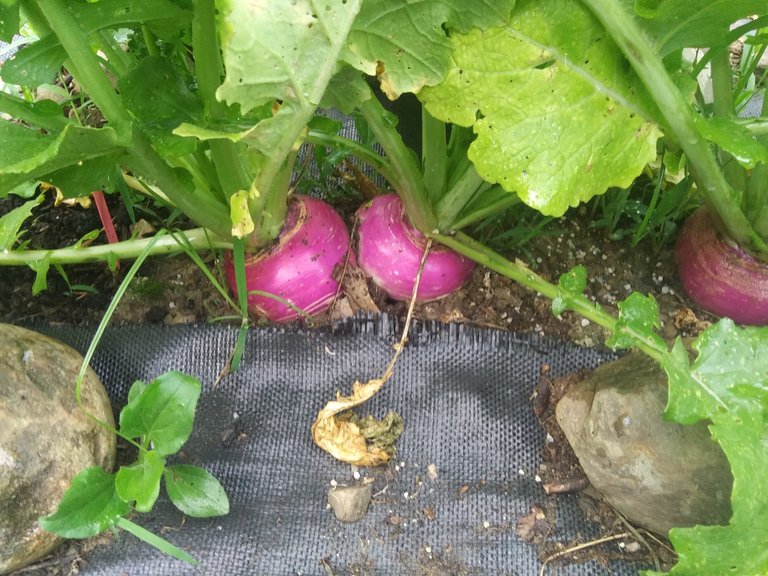
My dear little tomato seedlings moved out a while ago and are all grown up now. This is the first of what I hope will be hundreds of tomatoes this year.
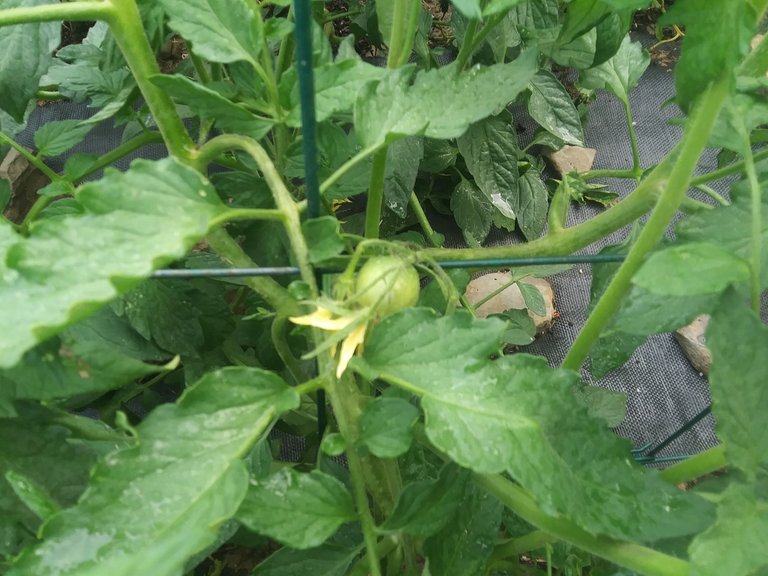
Here's a picture of our yard rooster Bubba taking a dust bath in the flower bed. I don't know why the chickens love this flower bed so much, but I think I'll be fencing it off next year because they keep digging up my bulbs. The flowers don't seems to mind so far, but it gets tiring planting the same things over and over again. There are anenomes and saffron crocuses in this bed that I've planted 4 times now.
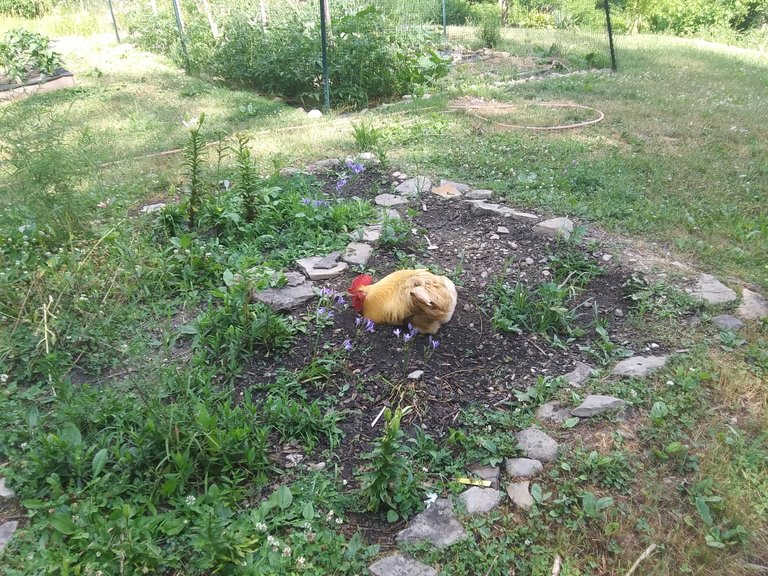
Another root veggie that has been doing well are the Chioggia beets. We like them for their mild flavor, and because the inside has a striking series of red and white rings. They seem to grow much better in this bed than the more common Detroit reds, and I'm hoping this year one will go to seed.
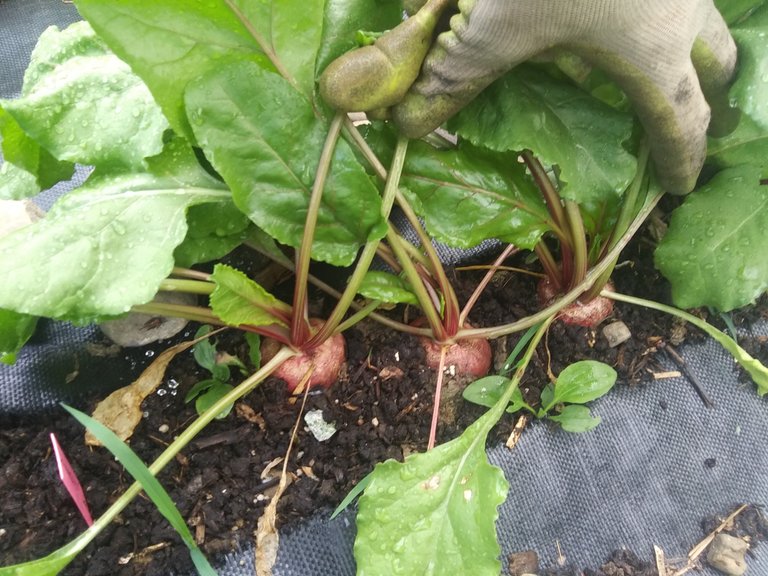
Speaking of going to seed, my radishes were looking great just before the last hard frost, and then they bolted. I don't mind, because the green seed pods are a delicious snack, and we use the seeds in sprout mixes. The flowers also attract bees and add a nice splash of whimsy to the garden.
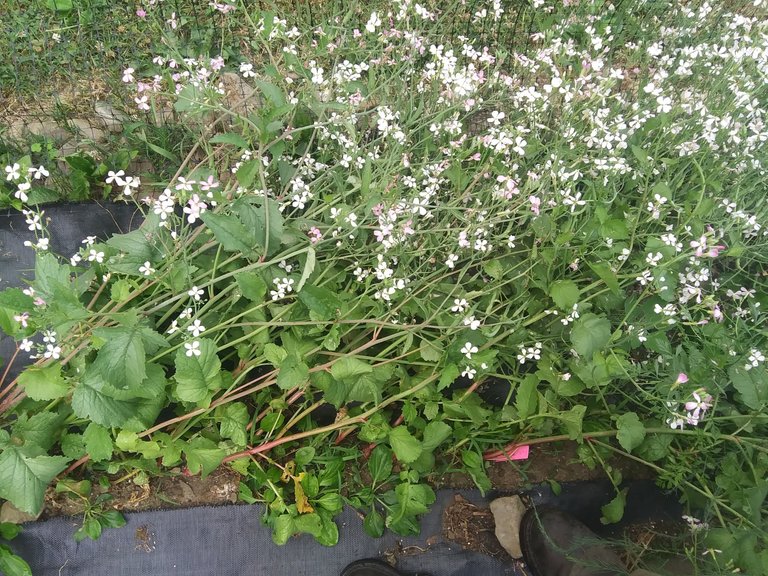
This is supposed to be my row of carrots, but only 2 came up. I reseeded the empty spots with fresh seeds, and still none of them sprouted. The entire year has been very hit and miss with seedlings. The big green blob on the left is calendula flower, which we used to plant to keep the slugs away. Now they come back every year, and I simply pull the ones I don't want. I left these in the carrot row since the carrots weren't using the space.
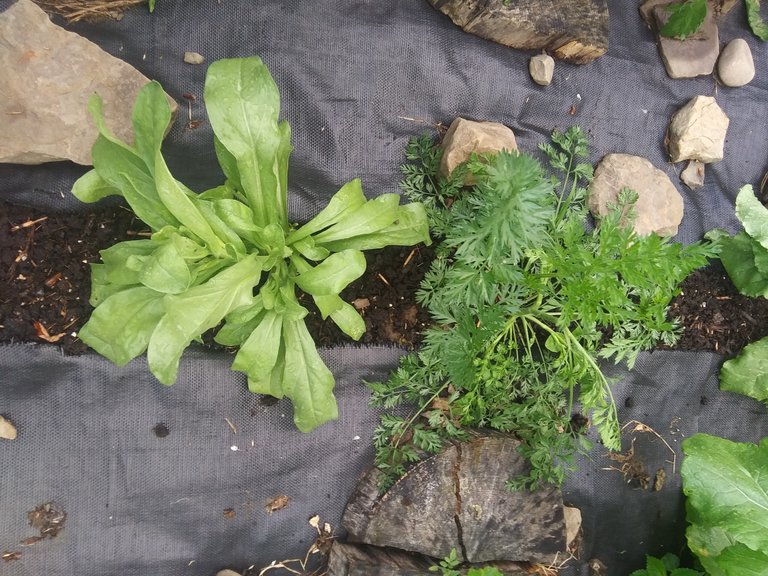
Some brassicas we bought from a local guy, both to try them out in this bed and to have as backups in case the ones the woodchuck ate didn't rebound. Below them you can see another spot where seeds didn't sprout for me, these ones were toothache plant. Left of the brassicas is a weedy row of dill, which was purchased from the same guy because none of those seeds were germinating either. I do think one finally came up in a short row above the turnips. To the right you can see more of our many tomatoes. We're getting low on our sauces, and hoping we can get a lot of tomato canning done this season.
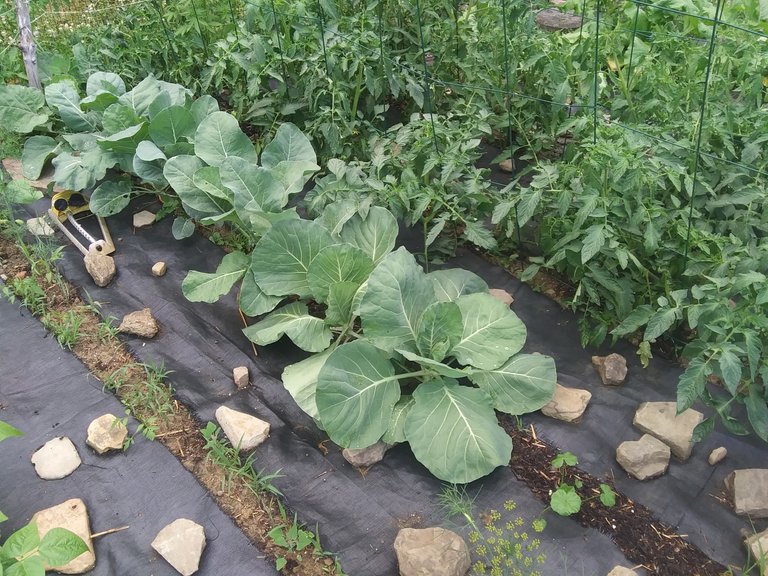
This particular garden used to be almost all beans, but now that we have a dozen or so quarts of hot dilly beans in the basement, and several bags of frozen beans in the freezer, I've cut it back to just two rows. This year it's a row of pole style green beans, and some bush beans that we've grown for a few years now that have yellow pods with black beans inside.
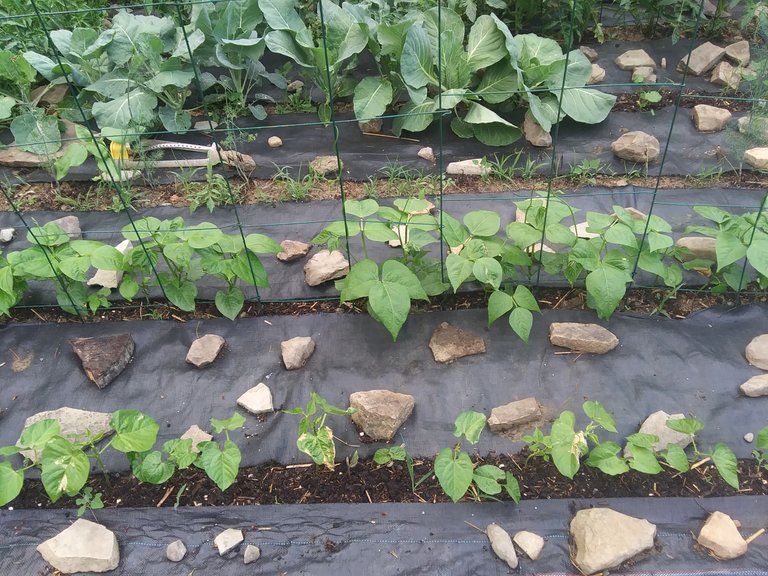
I've been frantic that we would have a shortage of fresh basil this year, but these little guys finally sprouted. Basil and dill are definitely our most used herbs, and fresh basil pesto with hand rolled pasta and some fresh cut tomato is one of the meals that I really look forward to every year.

I didn't get much squash out this year, and the chickens have put a lot of stress on most of it. This single zucchini and butternut are loving their lives fenced in with the beans and tomatoes, though. We've basically replaced pumpkins with butternut squash on the homestead, because it can be used for all the same things we use pumpkin for, tastes a little better (especially the toasted seeds), and has a much smaller footprint.
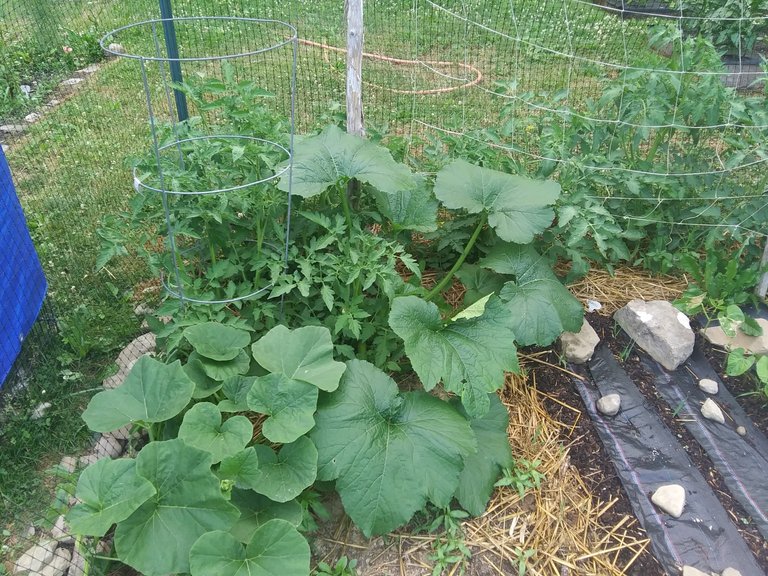
In the other garden, things have recovered pretty well from the woodchuck attacks, and as you can see, our self seeding kale is doing fabulous and is ready for a harvest. Mr. Groundhog has decided to leave this bed alone for now, having moved on to the less protected veggies that we plant as landscape decoration in some of the flower beds.
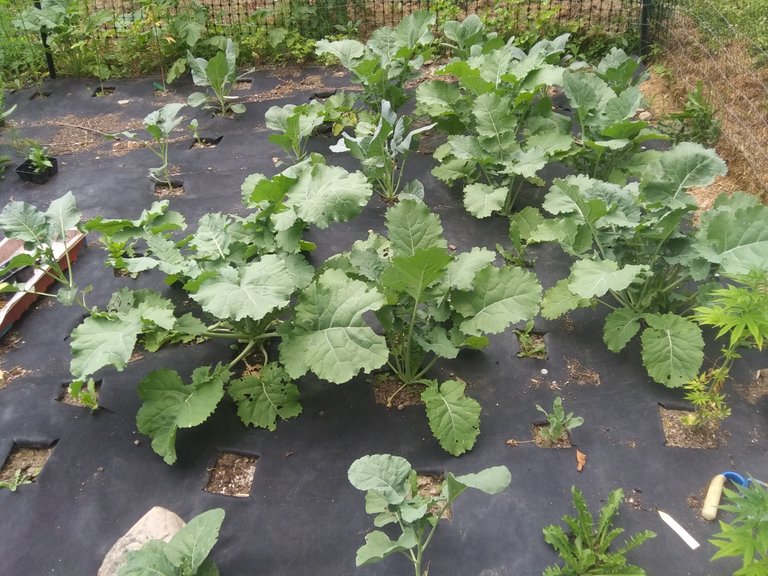
Our celery, in the row at the right of the pic below, has been unusually slow starting this year, but nonetheless has been wonderfully healthy. The woodchuck pretty much leaves it alone. He did really get after the spinach this year, and though it mostly grew back, it began bolting as soon as it recovered. The big shrub in the lower left corner is the parsley that survived the winter, which we're letting seed this year.
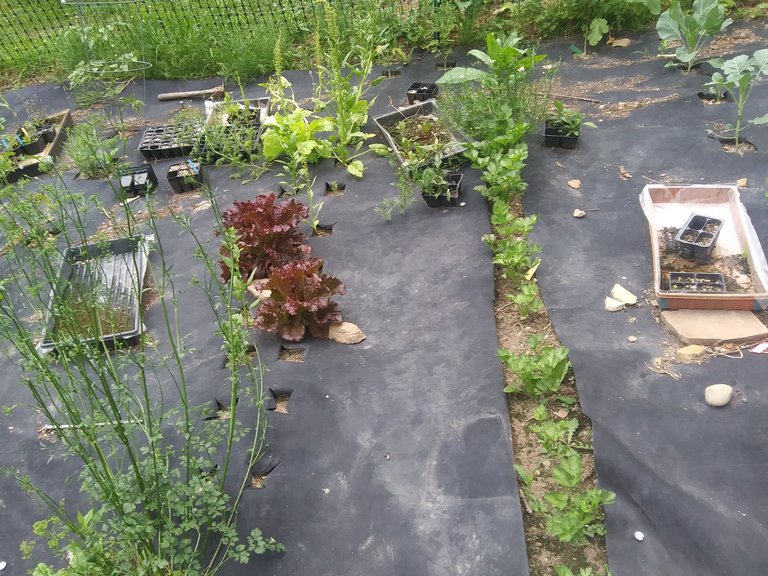
The tomatoes in this bed are a bit more humble, having been planted almost 3 weeks later than the others. They are still healthy and growing however, and we still have high hopes for them.
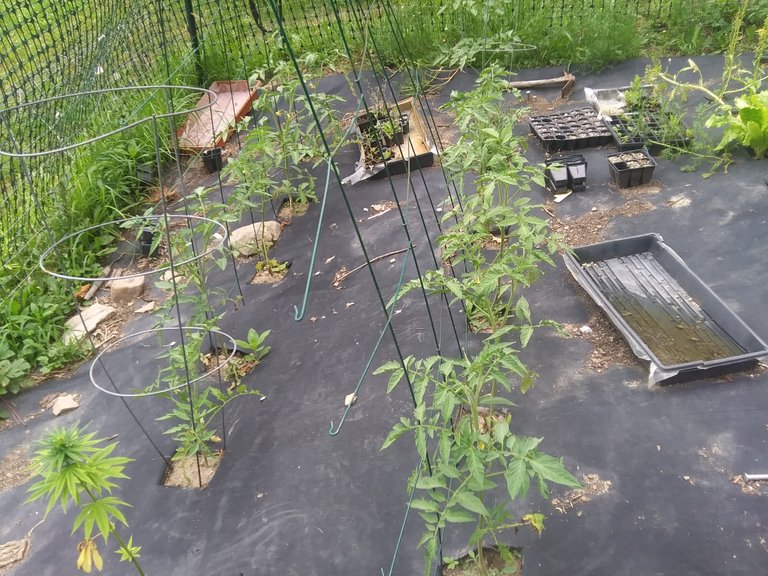
Pokeweed is one of the few poisonous plants that I keep some of every year, just because I enjoy looking at it. This one is getting ready to set some of those striking black berries. I learned this year that you can in fact eat poke, if it is harvested and prepared properly. I didn't take the time this year to tackle that recipe, I want to make sure that when I do it gets my full attention.
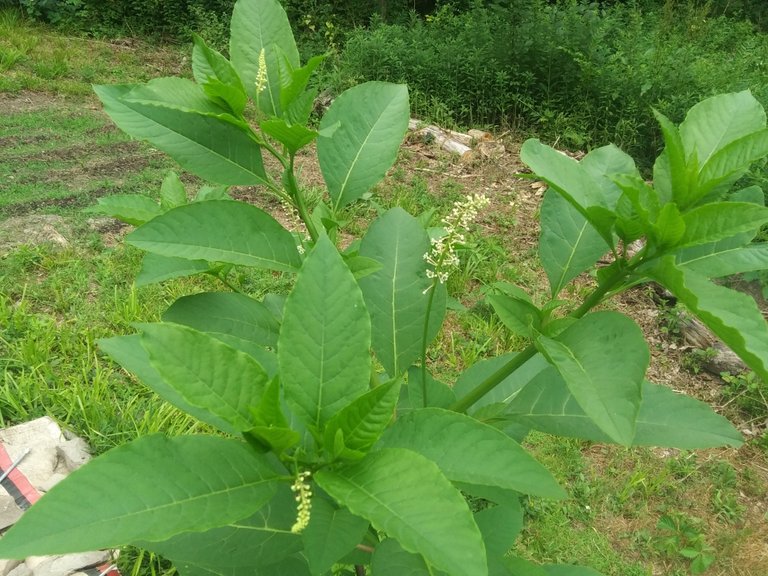
This is the harvest I'm looking forward to the most this year. These blueberries have been in this spot for 3 years now, and are looking to put out a pretty decent harvest this year. I had a pretty decent year with them previously, but the chickens got most of it because I didn't have the time or money to fence them in properly.

Another one of my yearly favorites, the hot peppers have been a consistent producer for us year after year here. This is good, because we both love spicy foods. We make our own hot sauce, hot pepper jelly, pickled hot pepper slices, and we freeze whatever is left for later use. This is a mix of long and short cayenne, jalapeno, serrano, and habanero peppers. We've tried red Fresno peppers for their great color in the hot sauce, but dropped them because the seeds we save from them have never sprouted.
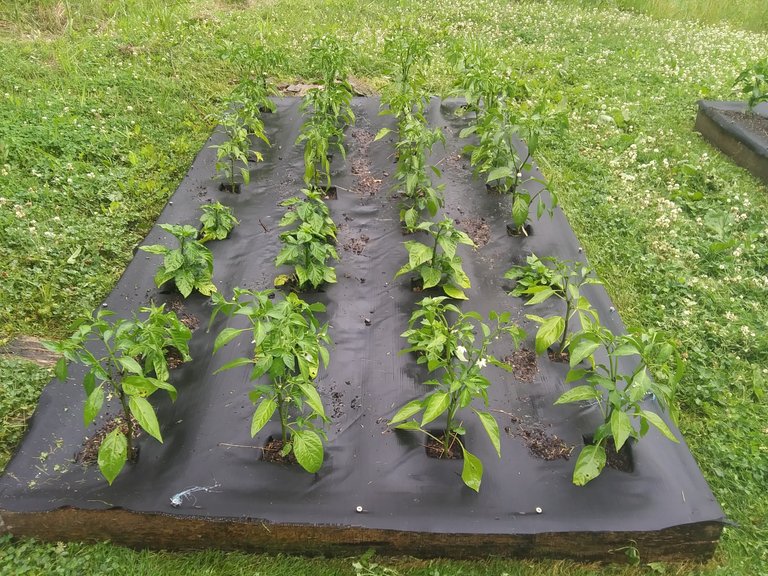
I had to buy sweet peppers this year, because none of mine came up out of about 300 seeds. I wasn't the only one who had bad luck with them locally, so I ended up getting these at Home Depot. We did get the full color range of red, orange, yellow, and green, but the cost was ridiculous. You're looking at almost $90 worth of pepper plants in this bed, and it isn't even full.
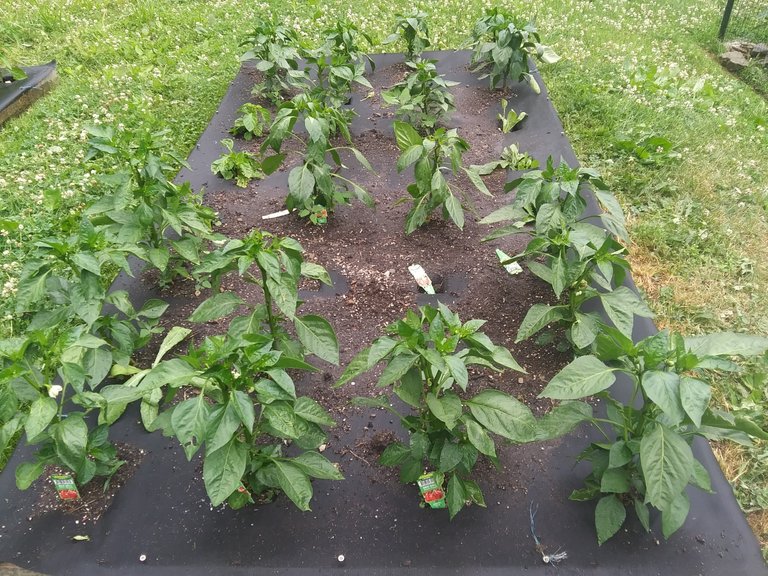
Remember those cute baby chicks? They've been outside for some time now, hard at work keeping the homestead free from ticks and managing the spider and moth populations. All under the watchful eye of Bubba, and our guard dog, Logan.
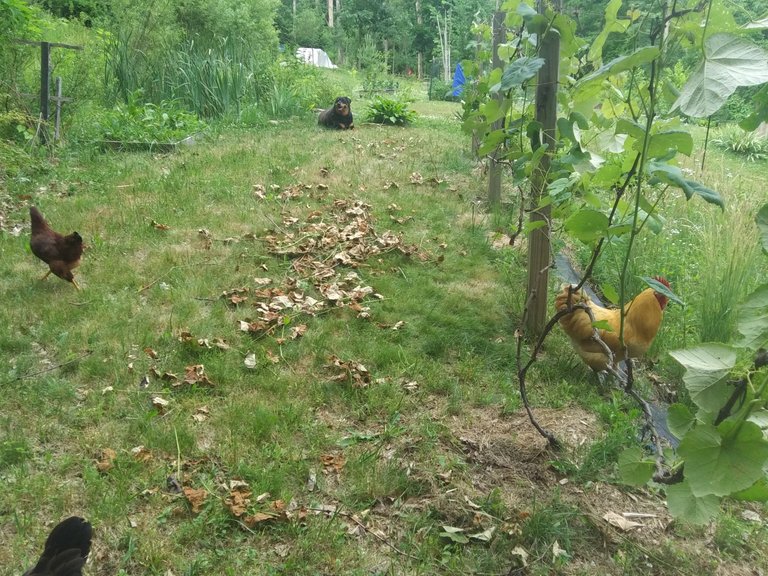
One thing the chickens control a little better than I like is the snake population. We used to get a pretty good mix of local non-poisonous snakes around the homestead, which helped keep the rodents at bay. Now I only see a few garter snakes a year, and I've had to thin out the chipmunks a bit with the pellet gun. I did get a pic of this beauty, though, while it was frozen in place to avoid the attention of me, the chickens, and the dog.
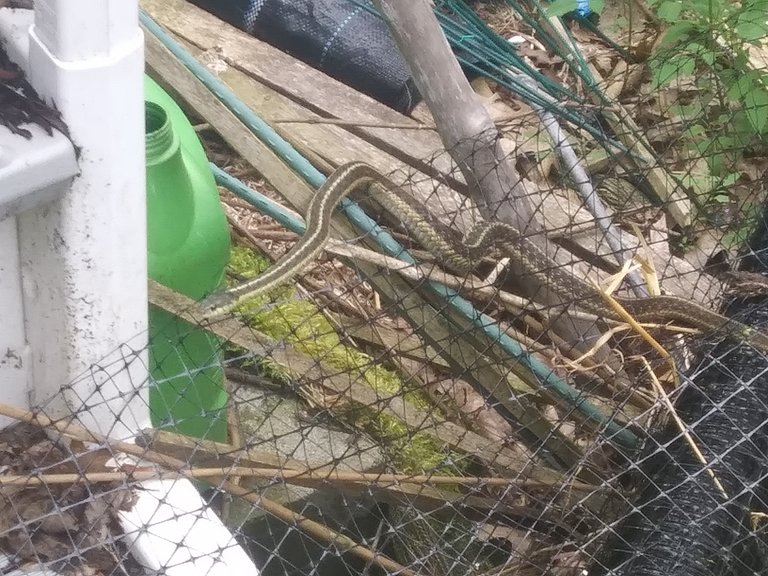
Wow, that post seemed to get away from me quickly. I had more pictures to share, but I think they'll have to go into 'Summer 2, The Overgrowth!'. I hope you've enjoyed looking at my little slice of heaven, and we thank you for the clicks!
Think I could learn a lot from you. Followed!
Any tips of for getting turnips from seed to start better? I usually direct sow and get a small percent that develop past seedling stage.
I'm afraid not, other than to say lay the seed down heavy. Thinning a row is much better than having an empty row and half a packet of seeds. Also, make sure your seeds don't dry out. Some years I need to water my seeds 3 times or more a day until they sprout.
Congratulations @paradoxtma! You have completed the following achievement on the Hive blockchain and have been rewarded with new badge(s) :
You can view your badges on your board And compare to others on the Ranking
If you no longer want to receive notifications, reply to this comment with the word
STOPSupport the HiveBuzz project. Vote for our proposal!
Thanks for sharing your creative and inspirational post on HIVE!
This post got curated by our fellow curator @deepu7 and you received a 100% upvote from our non-profit curation service!
Join the official DIYHub community on HIVE and show us more of your amazing work!